Minor Spoilers
In every legend, there are great heroes and mighty villains. As both sides go to war, nobody ever seems to think of the soldiers that fight side-by-side without heroic gifts or devilish powers. Souldiers, by developer Retro Forge and publisher Dear Villagers, places you as an ordinary soldier with an extraordinary destiny.
The game is a 2D Metroidvania that takes place in a realm between life, death, and the afterlife. You, as an unnamed soldier, fight your way through countless enemy monsters in an effort to fulfill your grand destiny and fight in Ragnarok. There are three separate classes that you can play as you make your way through rough terrain and vanquish your adversaries: The stalwart Scout, the agile Archer, and the wise Caster. Using the unique combat style of your chosen class, you fight through beautifully designed areas drawn in gorgeous pixel art while listening to amazing music tracks.
The classes each control differently and feel very rewarding to play. The Scout is a more traditional approach to combat, diving directly into the fray and hacking away at opponents. The Caster is a mid-range master, blasting powerful close-range attacks on nearby foes and launching magic missiles at those further away. But my personal favorite was the Archer, who excels at leaping into and out of danger while firing at opponents. They can also throw their bow like a boomerang while they wait for their ammunition to refill. Each class gains unique upgrades as they defeat bosses and progress through the story, expanding your abilities differently each time you play.
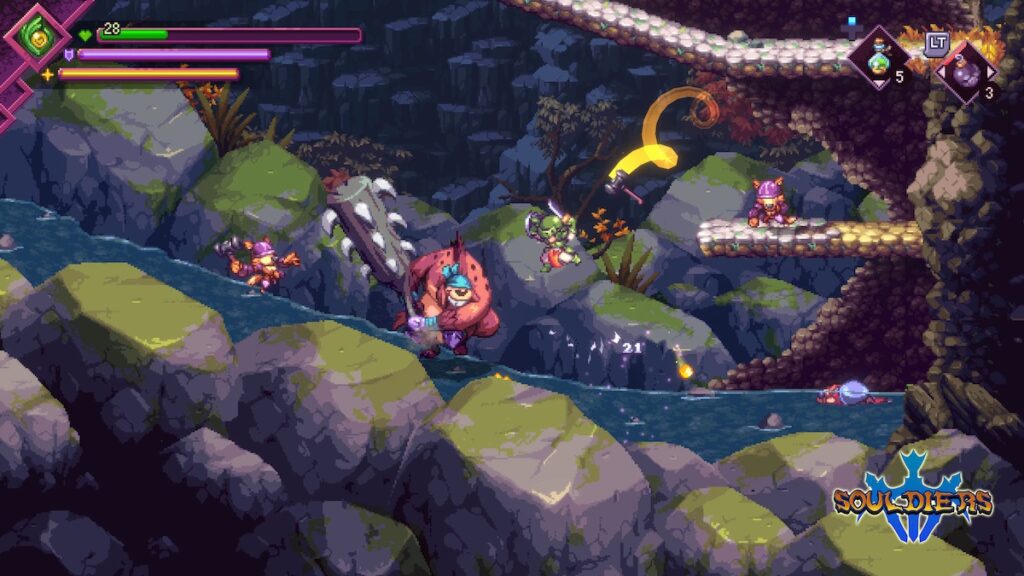
Having had the opportunity to play the game in both its base state as well as after its first updates, I can say with certainty that the team at Retro Forge has made immense improvements to the balance, difficulty, and overall enjoyment of the game. However, as pleased as I was with the changes to difficulty levels, I could not overlook some frustrating aspects of the game that would be impossible to simply patch.
The main hook, which can be finished in under a minute, vaguely introduces the kingdom that you serve and tells you that they are at war with an unknown opponent. (As far as I got, this enemy is completely absent from the game) The player watches merely the end of a strategy meeting, missing all of the crucial planning details. Then, the cast of barely-introduced main character archetypes (whom you are not) are stopped at the door by the Court Mage, who offers a change in plan. The player never gets to hear what this change is or why it should occur. Without a moment of explanation, the story immediately cuts to a legion of soldiers hiding in a rocky outcrop, preparing to ambush the enemy. Here, common foot soldiers grumble about the change in plan and are told to be quiet by a stereotypical protagonist-type.
Then there’s a cave-in, and it’s implied that you all die.
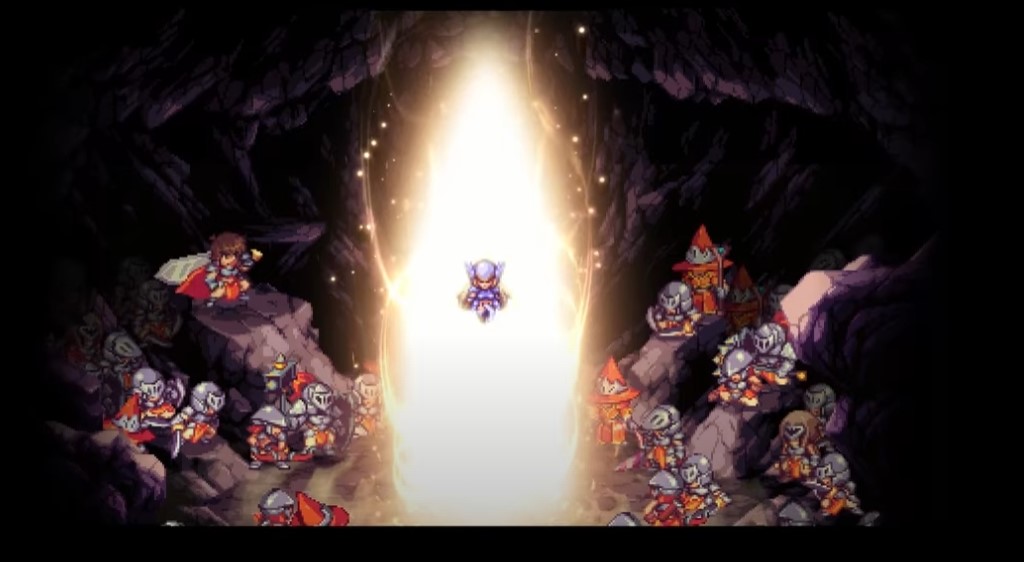
After initially being given vague understanding of the world that you were going to be exploring, you are taken away from it as a magic floating Valkyrie appears and tells you to forget everything you know. …huh?
After stepping through the portal that the Valkyrie opened, the only story information given is to seek out a holder of great power to become strong enough to fight in Ragnarok. Then, almost predictably at this point, the rocks we are standing on collapse and we fall down a cliff. That’s all the plot that I uncovered during my 5 hours of gameplay.
The story and dialogue also have significant challenges. But what was so off putting wasn’t a lack of polish, it was that every character continually insulted the player from the get-go. After making it through the tutorial area, we are introduced to a thief. She’s shown to be “incredibly strong” by merely defeating a slime in a single hit. (It takes the player a measly three hits.) Then she notices us, and drops a couple lines about how useless every soldier is, including you. Then, after watching her teleport away, a boss is thrown at you with no warning. If you lose, which was a near-guarantee before the first patch, the screen fades to black before your character wakes up in the same arena. The thief is back, and instead of showing us how strong she is by watching her kill the monster, she simply tells us that she killed the monster. Then she calls us useless again and tells us to follow the others into the cave. That’s essentially the extent of the dialogue that you encounter in the first area and tutorial combined, excluding two lazy soldiers who pass off their duties to you, a stereotypical shopkeeper pig-man, and a black-clad Knight with a spear. I found the Knight, appropriately named Dark Lance, to be the most interesting character that I encountered due to how well written and intimidating his dialogue is. But then you kill him.
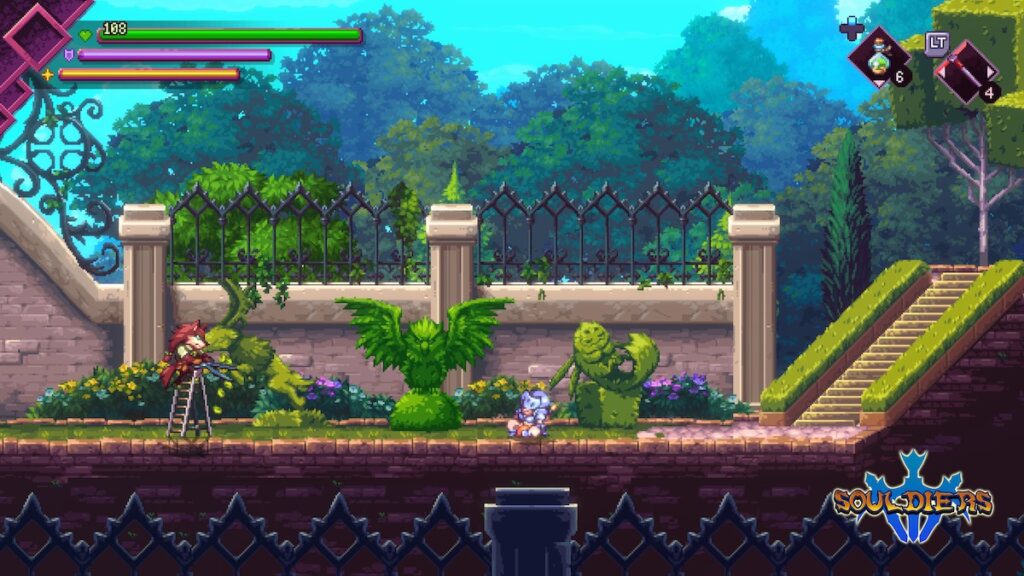
Story and dialogue do not break a game, just as art and music do not make a game. How does it play? I should preface this explanation by mentioning I was playing on a keyboard, but I was shocked by the sheer number of required controls.
Strap in, folks.
The game uses WASD controls, with a twist. The W button is used to interact, but it does not allow you to look up or to attack upwards unless you play as the Archer, which makes dealing with the wall climbing enemies in the first area frustrating. Similarly, crouching or facing down with the S button doesn’t help you directionally. And things get out of hand very quickly: The U button is used for a strong attack if you’re playing as the Scout class and the main attack if you’re playing as anyone else. The I button is the light attack, which is replaced by throwing your bow like a boomerang if you’re playing as an Archer. The O button is used to shield, as long as you still have any stamina left in your block meter. The P button is used to dodge roll, which is uniquely animated for each class but functionally the same regardless. The L button is used to counter, but only if you’re a Scout. The K button is used for items, like the bombs that you get in the first area. The Enter key is used to continue dialogue, the 1 button uses whatever potion you have equipped, and the C button swaps your potions. This is a veritable alphabet soup of a control scheme.
Suffice it to say, the controls are unintuitive, awkward, and overwhelming. It feels akin to using a Rubik’s Cube as a controller. What’s more, many of their functions seem either pointless or similar: why is parrying separate from blocking? If parrying is based on timing and is essentially a better block, why wouldn’t it be based on blocking at the right time like it is in so many other games?

But the bigger challenge isn’t with the layout, it’s the purpose of the controls themselves, and this issue perfectly dovetails with the problem of game balance: assuming that you play as the Scout, in the same amount of time it would take you to use a three hit combo of light attacks, you can only use one heavy attack. This wouldn’t be so bad, except the heavy attack only does one damage more than the basic light attack, up to a total of 6 bonus damage if you land a combo. If you choose to use a heavy attack, you’re not gaining an extra damage point, you’re sacrificing three times your light attack. And if you’re playing either of the classes, you’ll spend plenty of time waiting for your attacks to refill with barely any means of defense.
Similarly, the point of parrying is to use a counterattack, which deals massive damage. However, using a counterattack immediately shield-breaks you and prevents you from blocking until your meter fully refills. Your reward for parrying is to be made more vulnerable than if you hadn’t parried at all. From my experience, it even prevents you from further parrying. With us in mind, why would you ever parry an attack? It’s risky, leaves you open if you don’t time it correctly, leaves you open if you do time it correctly, and requires such precision that you’re more likely to get hit trying to parry then you would just trying to dodge or use your shield.
On the subject of dodging, you’re only able to dodge approximately every two seconds. Even just running around without fighting anything, this feels horrible. You have brief moments of slightly increased horizontal mobility followed by droughts of slow dreary movement. And if you’re under attack and you dodge at the wrong time? You get hit, and it’s your own fault for dodging wrong. You should’ve known better than to use your dodge roll when enemies weren’t around. You also can’t dodge in the air, meaning you are even more vulnerable trying to attack enemies from above by jumping up to them than if you were to stand there and accept your death.
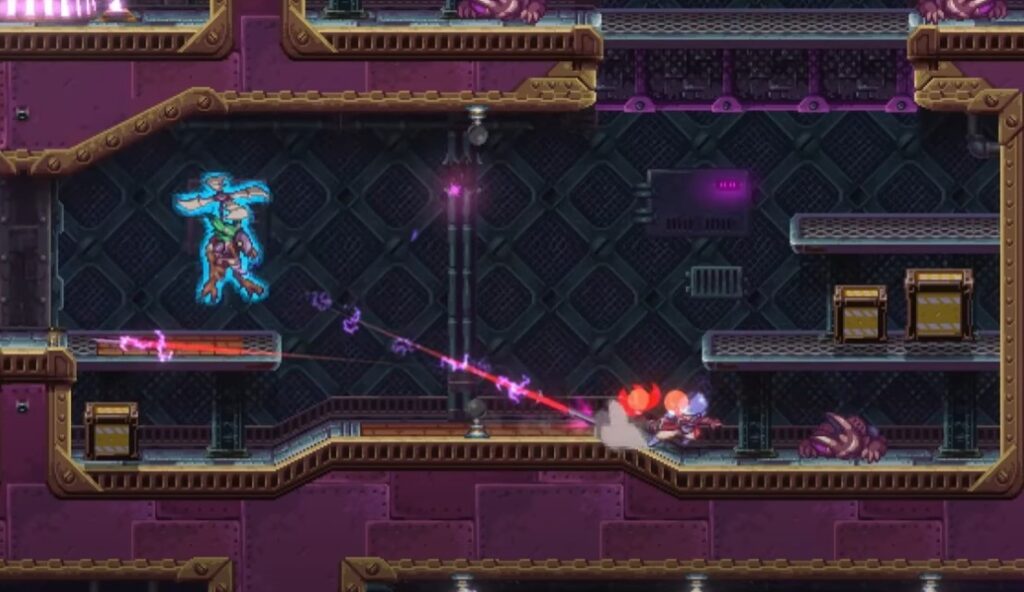
To keep yourself alive, you’ll get quite a lot of potions thrown your way. And potions aren’t the only collectables you’ll find. Around the world you can get green orbs to restore your health, coins, and red gems that refill your items. All items share the same mana bar, oddly resulting in shops selling individual points of mana instead of simply selling item refills.
In spite of the challenges, this game has a lot to offer. It’s ambitious. I really like the pixelart! I greatly enjoyed the music! The idea of swapping elemental gems really speaks to the flexibility of the world and level design. And the multitude of classes encourage the player to find their own play style.
I’d give Souldiers a 7 out of 10. The controls may tie your fingers in knots, the game may throw shade your way for being a low-rank grunt, but the world is still immensely fun to explore. If you’re interested in a new twist on a classic adventure formula, I recommend waiting for the next time Souldiers goes on sale.
Souldiers is out now on Steam, Nintendo Switch, Xbox, and PlayStation.
Related: Reviews by Aaron Grossmann
Gaming is a passion that I, like many other people, hold near and dear to my heart. As an aspiring Game Writer and general Storyteller, I enjoy looking into the vast worlds and deep stories of every game I can. Then again, sometimes bad guys just need a good pummeling, and I am more than happy to provide!

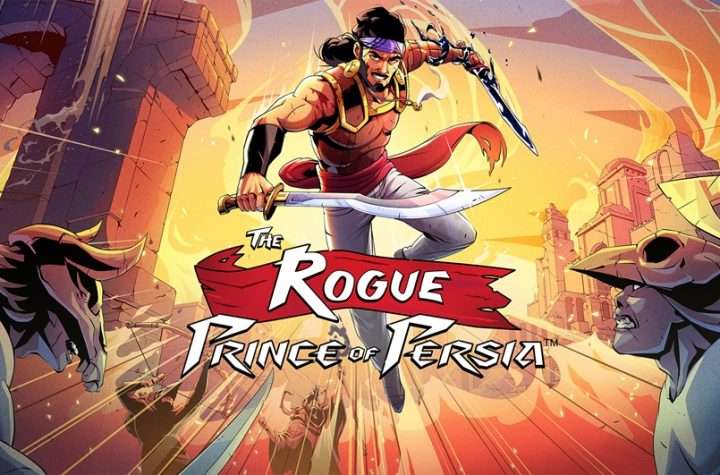
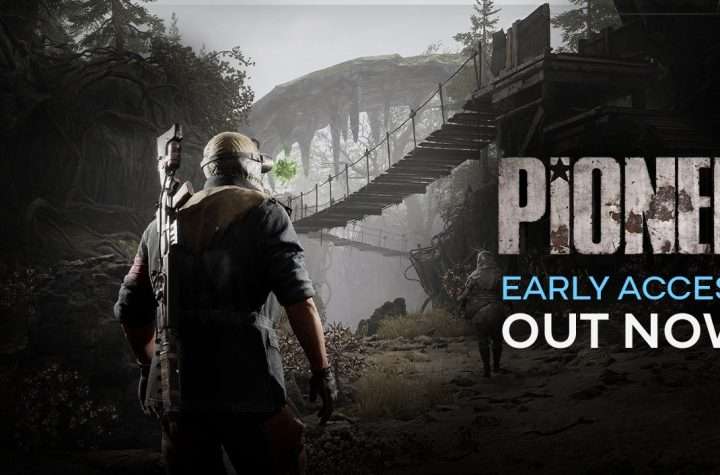
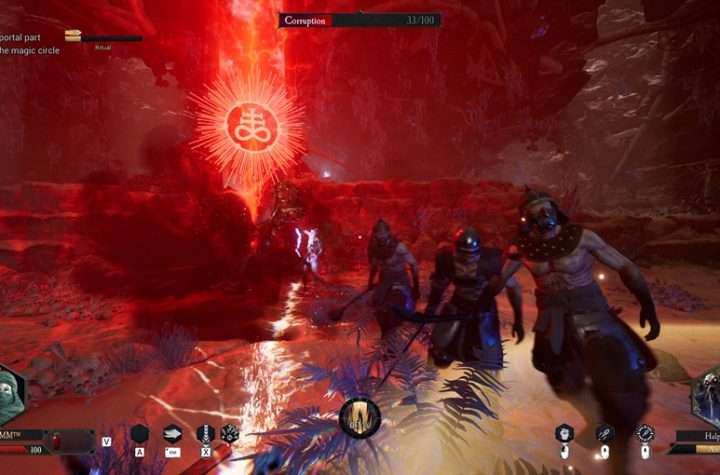

More Stories
Highly Anticipated Post-Apocalyptic MMO FPS, PIONER, Launches on Steam Early Access
DAIMON BLADES Preview for Steam Early Access
ReStory Preview for Steam